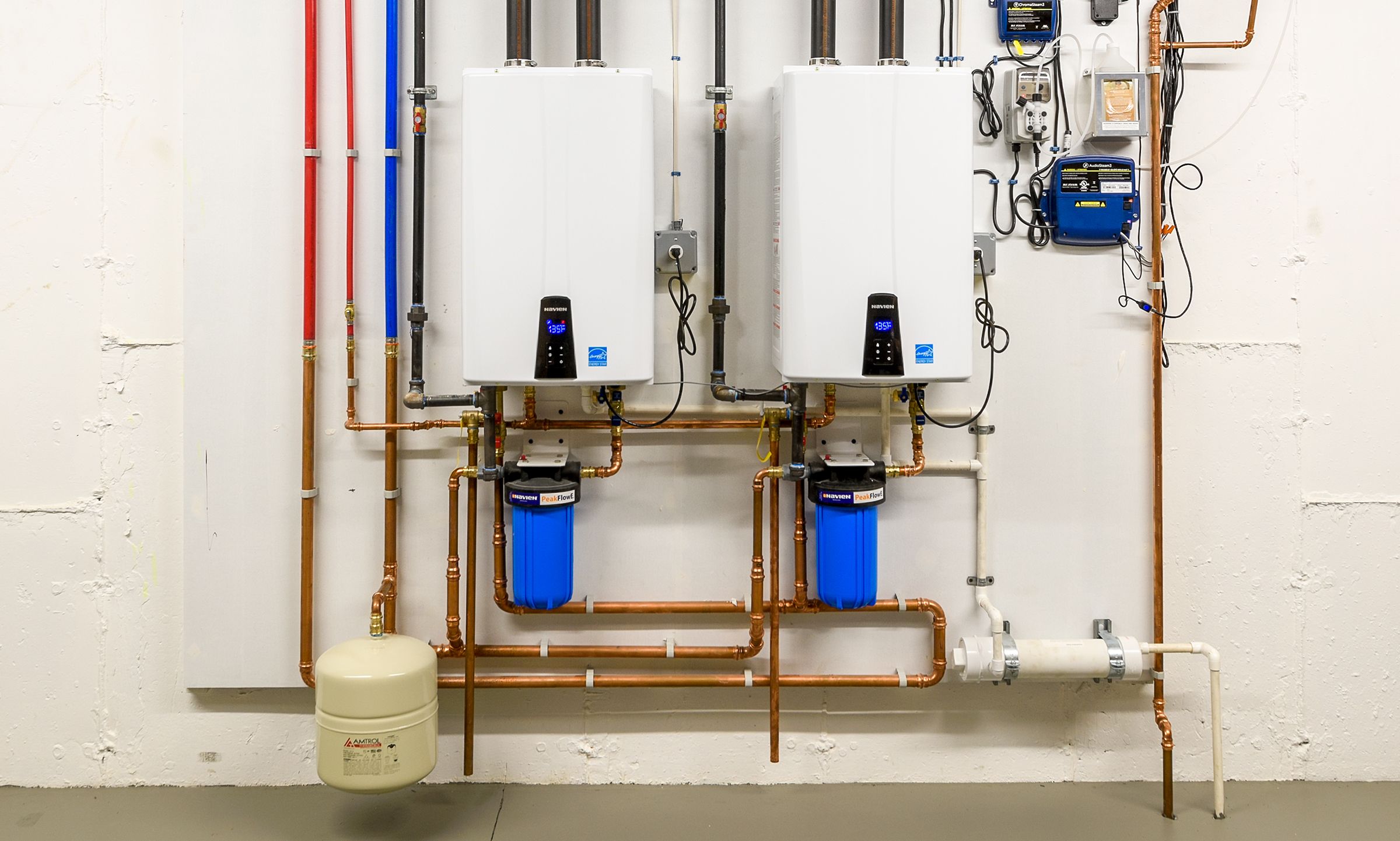Tankless water heaters are growing in popularity because they eliminate the need to continually heat water in a tank, meaning your energy costs remain the same throughout its lifespan. In addition to the cost savings, tankless water heaters are compact, and your hot water will have less of a chance of running out.
In this guide, we’ll explain how a tankless water heater works and the advantages of using one. We’ll also compare a tankless water heater to a conventional storage water heater. Then, we’ll provide you with the tankless water heater brands we recommend, helping you make an informed decision.
What Is a Tankless Water Heater?
A tankless water heater, also known as a demand-type or instantaneous water heater, provides a household with hot water as needed. It doesn’t require a tank to store water like a conventional water heater because it doesn’t continually heat water. Instead, it heats water on demand so you won’t run out of hot water.
How Do Tankless Water Heaters Work?
When you turn on your hot water faucet, water flows to your unit’s heat exchanger, and either a gas or electric component heats the water, which then travels through the pipes.
Here’s an in-depth description of how a tankless water heater delivers hot water to your faucet:
- A flow sensor detects water coming into the heater and sends a signal to the control panel to produce hot water.
- In a gas-fired unit, the control panel turns on the fan, which draws in outside air, opens the gas valve that lets in the gas, and ignites the burner.
- The heat exchanger captures heat from the flames and transfers it to the water moving through the exchanger’s tubing.
- The mixing valve tempers the superheated water exiting the exchanger.
- If the temperature sensor detects that the water exceeds or falls short of the desired setting, the panel will adjust the gas valve, the mixing valve, and the flow-regulating water valve accordingly.
- A sealed vent (or pair of vents) through a roof or outside wall carries away exhaust gasses and conveys combustion air to the burner.
How To Select a Tankless Water Heater
Your hot water needs and budget will help you determine which tankless water heater type to choose, but other factors play a crucial role in the selection process, including:
- Condensing vs. non-condensing technology
- Efficiency ratings
- Fuel type
- Installation location
- Size and capacity
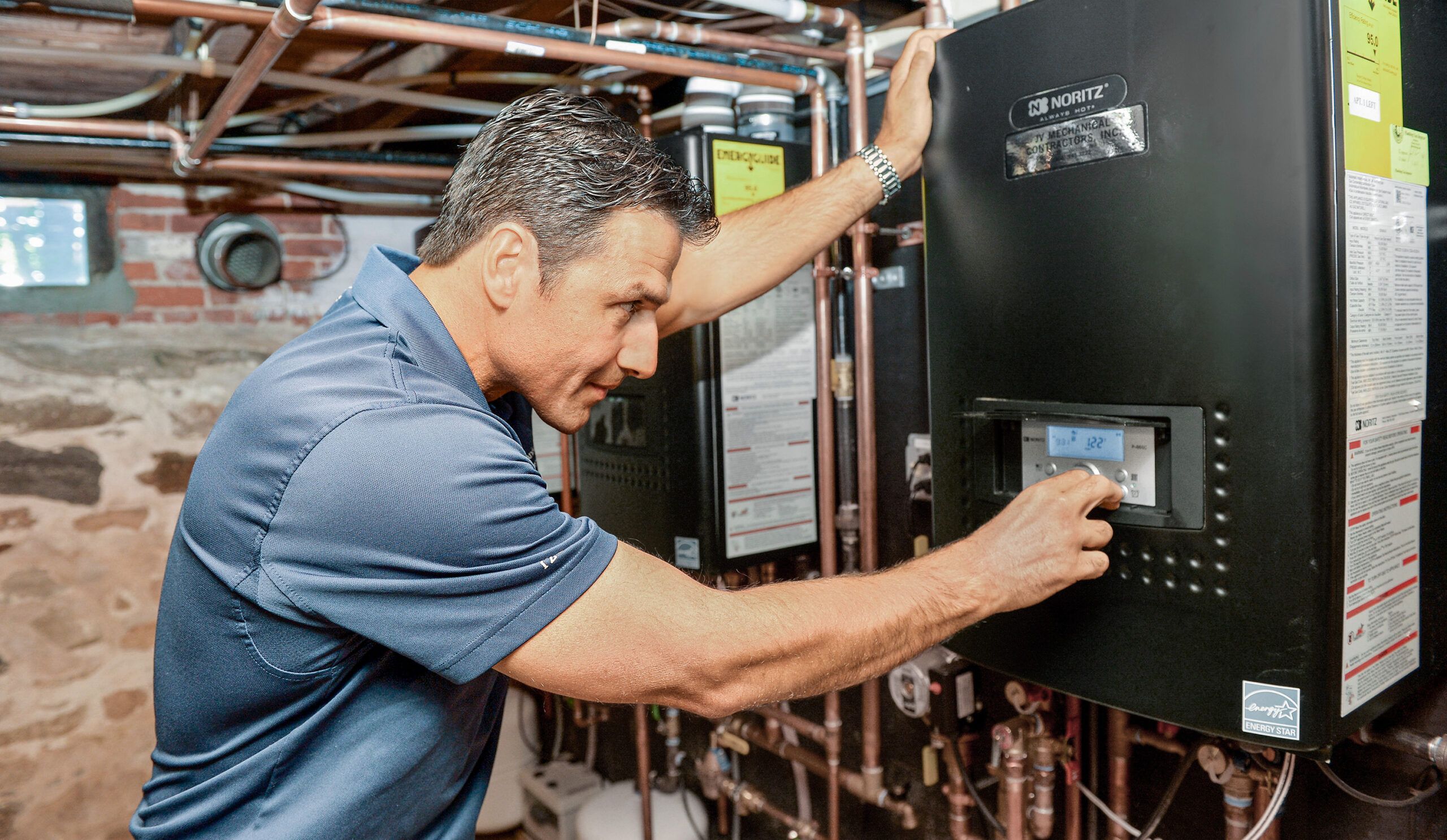
Condensing vs. Non-Condensing Technology
A condensing tankless water heater traps condensation and then recycles it to heat water rather than releasing it into the atmosphere. It can also collect the heat from exhaust gasses by using an additional heat exchanger. The benefit of using a condensing tankless water heater is greater energy efficiency, resulting in lower costs. Another advantage is that your options for ventilation are less expensive since the exhaust from the system is cooler.
Non-condensing tankless water heaters have a single heat exchanger. The water flows through the exchanger, and any unused exhaust heat releases through a vent. They’re less of an investment upfront, but the metal venting they require because of their higher exhaust temperatures can be expensive. They also aren’t as efficient as condensing heaters because they don’t use recycled heat from the exhaust to warm your water.
Energy Efficiency Ratings
The more energy-efficient your tankless water heater is, the less it will cost to heat your water. The energy efficiency ratings for these water heaters are determined by their uniform energy factor (UEF). The UEF measures how much energy your tankless water heater uses and how much energy is required to power the heater itself. A higher UEF means the water heater is more efficient.
You can learn the estimated UEF of your water heater by checking its Energy Guide’s yellow label. Every residential water heater should have one. Compare your current UEF with other models to learn which ones provide the proper energy output for your household.
Fuel Type: Gas vs. Electric
The fuel type affects the water heater’s size, capacity, and operation costs. There are also some differences in efficiency.
Electric Tankless Water Heaters
Electric tankless water heaters heat water using thick copper wire rods. They’re less expensive than gas-powered ones but aren’t efficient if you run multiple hot water devices. They may struggle to keep up with multiple appliances at the same time.
Installing an electric water heater is easier than a gas heater, but you might have to upgrade your electrical system. Your water flow may be weaker, but they’re quieter, smaller than gas-powered water heaters, and more eco-friendly.
Gas Tankless Water Heaters
Gas tankless water heaters are powered by natural gas or propane tanks. They’re more expensive than electric ones, but part of the reason is that the installation process is more complex. Installation requires access to a natural gas line and ventilation. Gas tankless water heaters are more efficient and heat the water faster than their electric counterparts. They can also service several appliances at the same time.
Indoor vs. Outdoor Installation
A plumber can install an instant hot water heater inside or outside. Outdoor tankless water heaters have vents with free airflow. They’re designed to be outdoors, but you must drain them if you live in an area that drops below freezing in the winter. Existing homes benefit from outdoor installation since indoor units require plumbing adjustments.
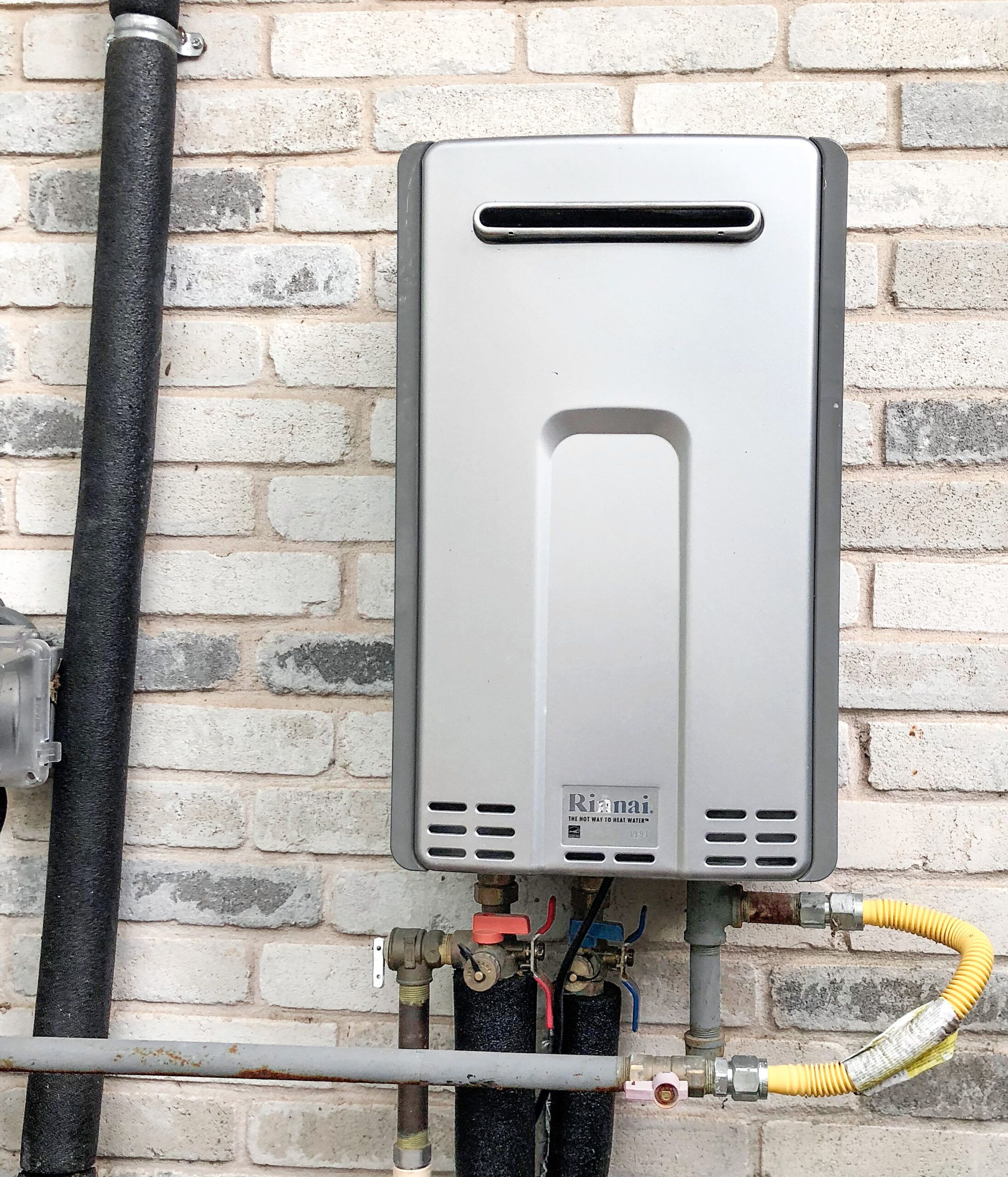
Indoor units require some ventilation piping and must connect to a drain to pull away water caused by condensation. Indoor water heaters aren’t exposed to the elements and don’t need as much maintenance and care. You might need to upgrade your existing gas line or electrical system to install an indoor tankless water heater.
Size and Capacity
The correct size water heater will meet your household’s hot water needs and work efficiently. Tankless water heaters are rated by temperature rise at a given flow rate, and they’re calculated in British Thermal Units (BTUs). You can find a water heater’s BTUs in the specifications and compare that number to your household’s total BTU needs. If you find that one water heater isn’t enough to meet your demands for endless hot water, you can install two or more tankless systems.
Tankless Water Heaters vs. Tank Water Heaters
Most homes have tank water heaters, but tankless are gaining in popularity. Tankless heaters use less energy, resulting in lower costs, but they aren’t ideal for every home. In comparison, you can install tank water heaters in any home, and the tank water heater installation cost is lower than its tankless counterpart. Yet the average tank water heater has a lifespan of 10–15 years and is generally less efficient toward the end of its life, using a lot of energy to heat water and costing you more money.
Key Differences
Tankless and tank water heaters serve the same purpose, but they have several key differences. Below we’ve compared the differences between the two:
| Tankless Water Heaters | Tank Water Heaters |
| Average installation cost $2,600* | Average installation cost $2,100 |
| Lasts approximately 20 years | Lasts 10–15 years |
| Heats water on demand | Stores and heats water in a tank |
| Energy efficient | Less efficient due to standby heat loss |
| Doesn’t need a lot of space | Doesn’t require many repairs or maintenance |
*Cost data in this section from Fixr and HomeAdvisor.
Pros and Cons of Tankless Water Heaters
This is definitely a job for a pro, as it involves making leak-free water, vent, and gas connections, in the case Tankless water heaters have many advantages, but there are also a few disadvantages to choosing a tankless over a tank water heater. Below we cover the pros and cons of instant hot water heaters.
Tankless Water Heater Pros
- Lifespan is 15–20 years
- Offer an endless supply of continuous hot water, whereas a tank water heater eventually runs out of hot water
- Save space with a compact size
- Since tankless heaters only heat water on demand, they are energy efficient, reducing utility bills
Tankless Water Heater Cons
- Although you never run out of hot water, a tankless water heater’s output has a limited flow rate and might struggle to meet your household’s demand on the system
- Cost more to purchase and install compared to tank water heaters
- Slight delay in hot water delivery to fixtures
- You may need to upgrade your gas line or electrical system
Cost of Tankless Water Heaters
The average tankless water heater cost is $2,600*, but the range is anywhere from $1,300–$3,900. High-end brands can cost up to $6,000. Your on-demand water heater’s cost will depend on factors such as brand, model, and installation complexity.
Instant hot water heaters can work as single-point systems or heat water for the whole house. Single-point water heaters, or point-of-use water heaters, usually service a showerhead or faucet and heat 0.5–2 gallons per minute (GPM). They cost between $100 and $300.
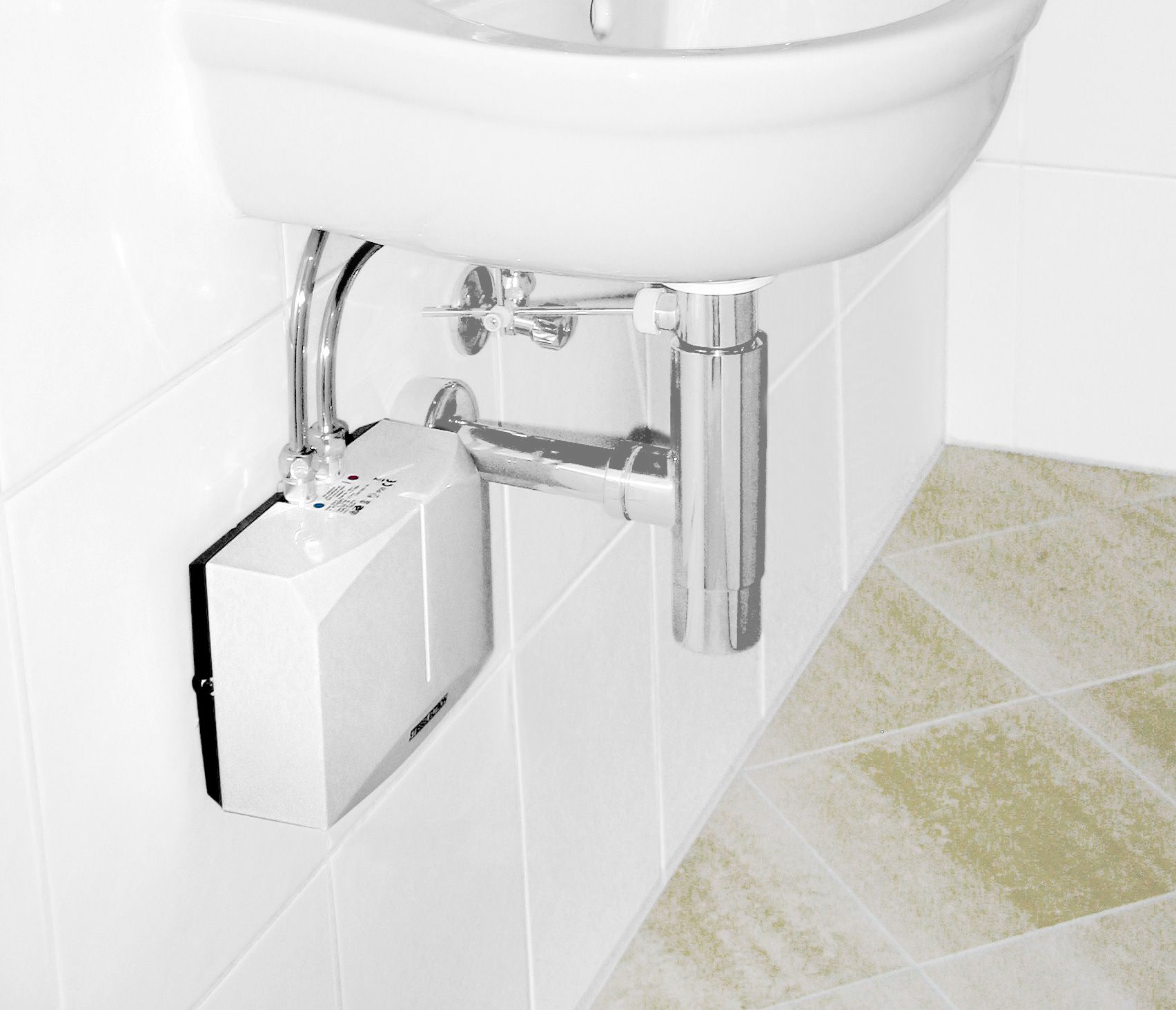
The tankless water heater installation cost varies because you may have to upgrade your gas line or electrical system to accommodate a tankless system, but the national average is $2,500. Keep in mind that these are estimates and that installation pricing also depends on how much hiring a plumber costs in your area.
*Cost data in this section from Angi and Fixr.
Tankless Water Heater Sizing
As previously mentioned, selecting the correct size tankless water heater ensures your system will work efficiently. By learning your total BTU needs, you can compare it against a water heater’s specs.
Your total BTU output requirement is your household’s temperature rise at a given flow rate. The flow rate is measured in GPM and your temperature rise is the temperature at which your water initially runs subtracted from your desired hot water temperature.
You can get an accurate rating of your heater output. To determine your desired temperature rise and flow rate requirements and then compare them to tankless water heater specs, take the following steps:
- Estimate how many hot water devices you likely use at any given time.
- Calculate each device’s flow rate (GPM). You can do this by placing a large bucket under the faucet and running it for a minute. Then, measure how many gallons filled the bucket. Here are some average fixture flow rates for your reference:
- Dishwasher: 1–2.5 GPM
- Kitchen or bath faucet: 1.5–2.2 GPM
- Showerhead: 1.25–2.5 GPM
- Tub filler faucet: 4 GPM
- Washing machine: 1.5–3 GPM
- Add all the appliances’ flow rates together to get the maximum flow rate.
- Once you have the flow rate, you have to determine the temperature rise. Measure the incoming water temperature with a thermometer. Subtract that number from your desired output temperature to get the temperature rise, which is usually 120 degrees Fahrenheit. See the map below for the average groundwater temperature if you don’t have a thermometer.
- Compare the specs on a tankless water heater to your maximum temperature rise and flow rate to find the correct size for your household.
If you don’t want to do the math, below are average BTU estimates according to how many people live in a household:
- One bathroom, one or two people: 140,000 BTUs
- Two bathrooms, two or three people: 190,000 BTUs
- Three bathrooms, three to five people: 380,000 BTUs
If you have difficulty determining your temperature rise or water flow rate, contact a plumber or home improvement professional who can help you figure out which tankless water heater size is right for your household.
BTUs Per Gallon by Region

Popular Tankless Water Heater Brands
A tankless water heater’s performance depends on the quality of the system. Some brands are designed with performance and efficiency in mind. In this section, we’ll introduce some manufacturers known for quality and reliability, but we recommend you find a local plumber for professional guidance. They’ll help you to select the best brand and model for your specific needs.
Rinnai
Our top pick for a tankless water heater is Rinnai. It makes both condensing and non-condensing tankless water heaters, specializing in gas or propane systems. It also provides guidance if you want to convert to an electric water heater. Rinnai tankless water heaters last twice as long as other brands and some connect to WiFi, which allows you to control your heater with an app. It also has technology that helps the heater learn your water usage patterns so that you get your hot water faster.
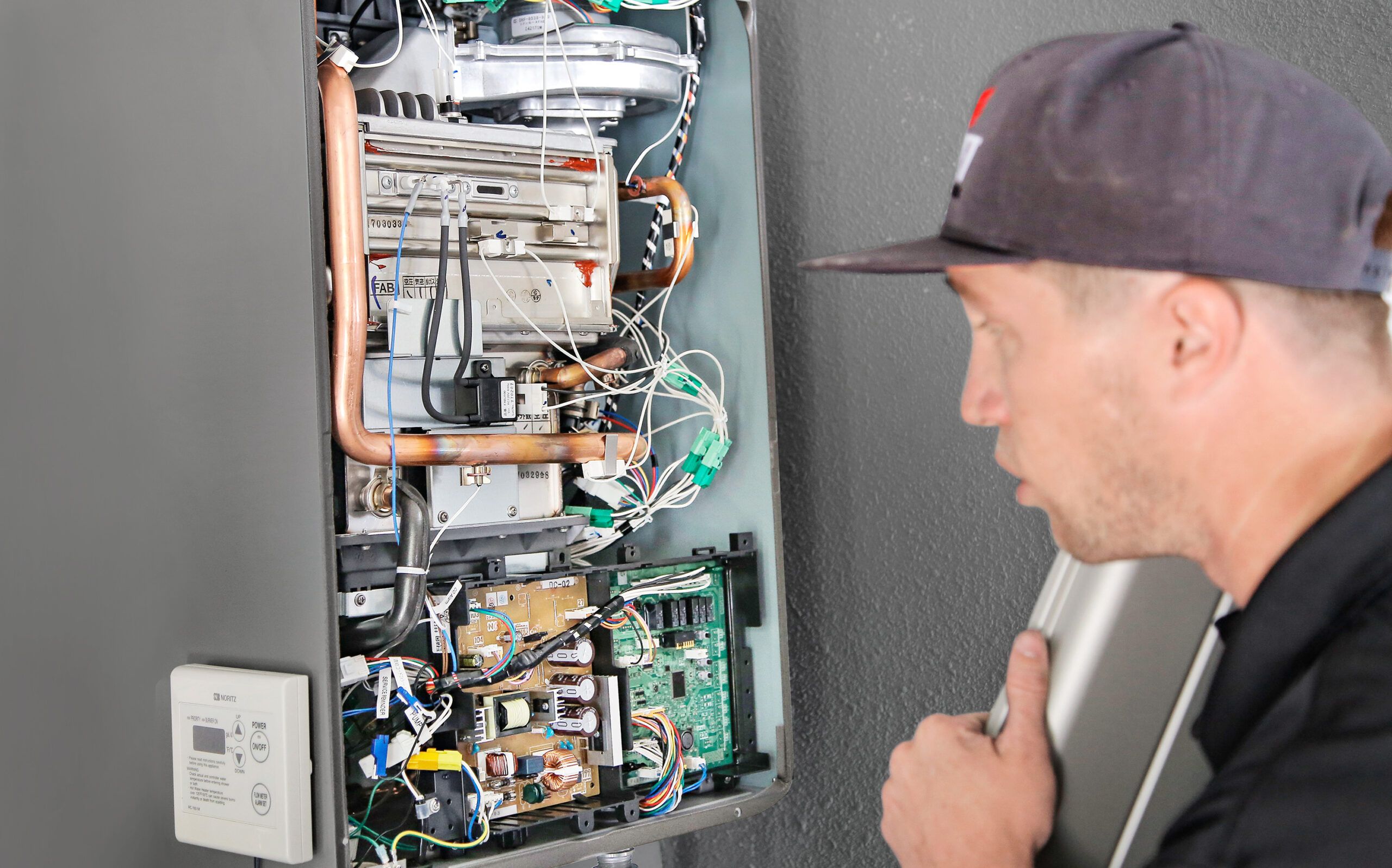
Other Leading Brands
If you can’t find what you’re looking for from Rinnai, we have a few other trusted brands that sell premium tankless water heaters. Those include the following:
- Bosch: Bosch offers both electric and gas models at compact sizes. They’re highly efficient, which means you won’t waste energy or money trying to heat your water.
- Noritz: Noritz has high-efficiency condensing gas units that you can place indoors or outdoors. Every system comes with a 12-year warranty, and all its customer service reps are certified water heater specialists, providing excellent care from installation to service.
- Rheem: Rheem offers a variety of gas and electric models at a good value. It sells condensing and non-condensing heaters with WiFi technology similar to Rinnai.
- Takagi: Takagi makes durable gas-fired heaters. Its heaters are commercial grade and provide different maximum flow rates.
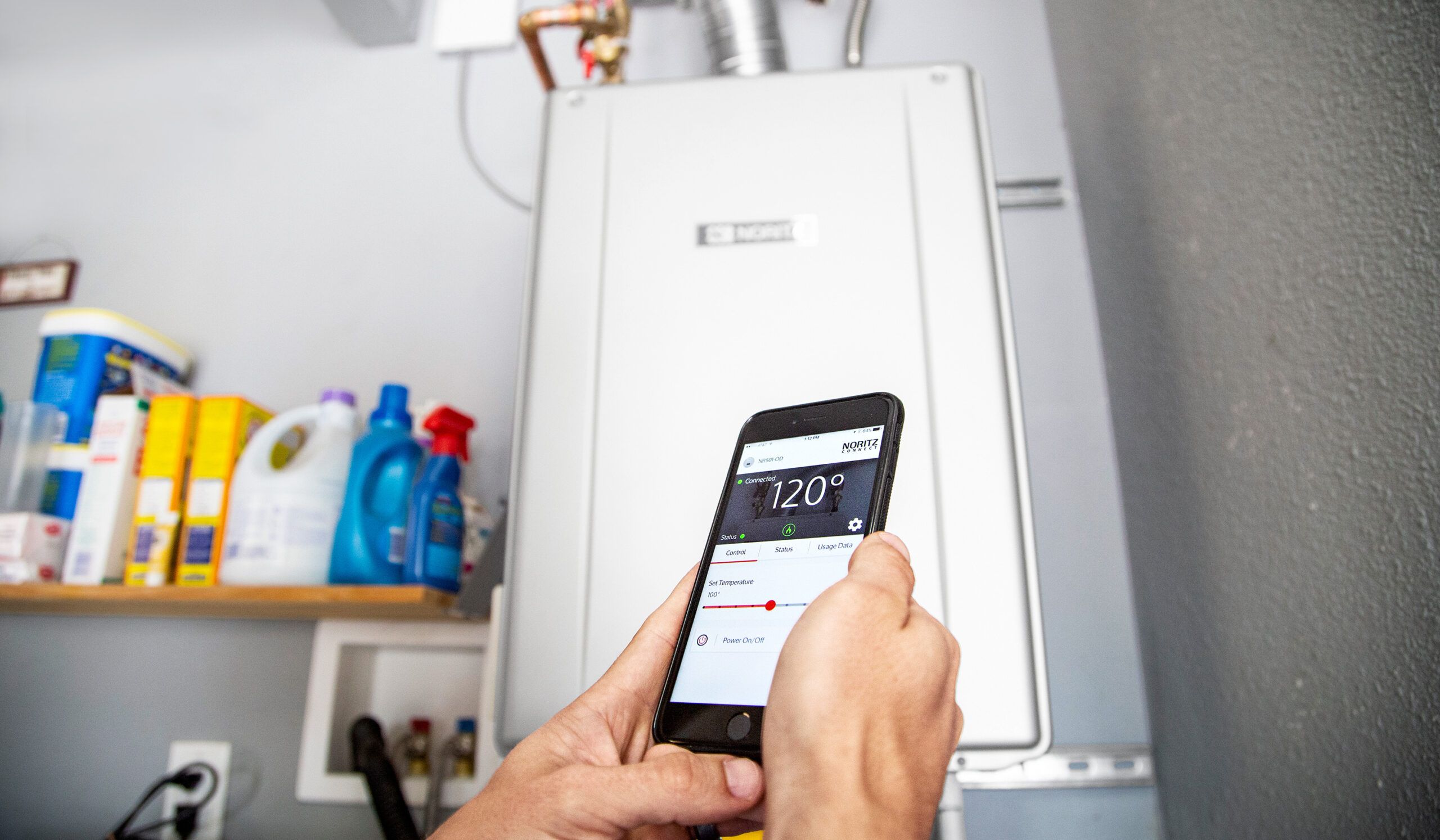
DIY vs. Pro Tankless Water Heater Installation
When installing a new tankless water heater, there are a few things you need to consider. If you had a tank water heater, you may need to retrofit a tankless heater. This could mean upgrading your electrical system or gas lines. You’ll also need to ensure your unit is properly ventilated and consider installing more than one, depending on your hot water needs.
Installing a tankless water heater requires an advanced do-it-yourself (DIY) skill level, as well as some plumbing and electrical experience. In addition, some tankless water heater brands may require proof of professional installation to secure your warranty. Since they’re complex systems, we recommend hiring a plumber near you and contacting an electrician to ensure proper connection to your water supply and setup installation.
Tankless Water Heater Maintenance
Although installing a tankless water heater may be difficult, you can maintain your system yourself. Maintaining your tankless water heater will prolong its life and ensure efficiency. Some steps you have to take to maintain a tankless water heater include the following:
- Cleaning the exterior: Keeping the exterior clean will help you avoid getting dirt and debris into interior components
- Descaling the system: If you have hard water, you’ll want to descale mineral buildup or sediment
- Flushing the unit: Flushing your tankless water heater removes debris
- Replacing air filters: Clean air filters ensure proper ventilation
Is a Tankless Water Heater Worth It?
Opting for a tankless water heater is worth it for several reasons, including:
- Energy efficiency: Since your tankless water heater doesn’t continuously heat water, it uses less energy than a traditional tank water heater.
- Less expensive: Although installing a tankless water heater does have higher upfront costs, the energy savings will lower your utility bills.
- On-demand hot water: A tankless system heats water when you turn on the hot water faucet, so your hot water never runs out.
- Space savings: A tankless water heater’s compact size allows you to place it in most places inside or outside your home.
Our Conclusion
Tankless water heaters are energy-efficient and compact. They provide hot water on demand, which could result in lower utility bills. Consider switching from a traditional tank water heater to a tankless system if you don’t have many hot water demands or want to lower your energy consumption. Remember to find the correct size tankless water heaters to meet your household needs and properly maintain your system to ensure it works efficiently. We recommend you get quotes from reputable plumbers in your area for installation estimates.
FAQ About Tankless Water Heaters
The downside of a tankless water heater is the initial higher cost. It’s more expensive to install a tankless water heater compared to a traditional tank water heater. It also takes more time for the water to heat up and travel through the pipes to reach its destination.
It’s worth switching to a tankless water heater because it helps you save on energy costs. According to the U.S. Department of Energy, you can save up to $100 per year depending on your hot water consumption.
Yes, you can replace your 40-gallon water heater with a tankless water heater, but you might have to upgrade your gas line or electrical system.
Both traditional hot water heaters and tankless water heaters have their advantages, but tankless water heaters have longer lifespans and cost less to operate. They also save energy because the hot water is on demand and heats when you turn on a hot water faucet.
You might want to avoid a tankless water heater due to its higher upfront cost. Another downside is the possible upgrades to your gas line or electrical system required to install one.
A tankless water heater lasts approximately 15–20 years.
A tankless water heater might provide enough hot water for a large family, depending on your hot water needs, but it could struggle if you run many appliances at the same time. Many households install more than one tankless hot water heater to meet their demands.
Yes, tankless water heaters are more environmentally friendly than traditional hot water heaters. Since they produce hot water on demand, they don’t need to continuously heat water in a tank, preserving energy.
To share feedback or ask a question about this article, send a note to our Reviews Team at reviews@thisoldhousereviews.com.
